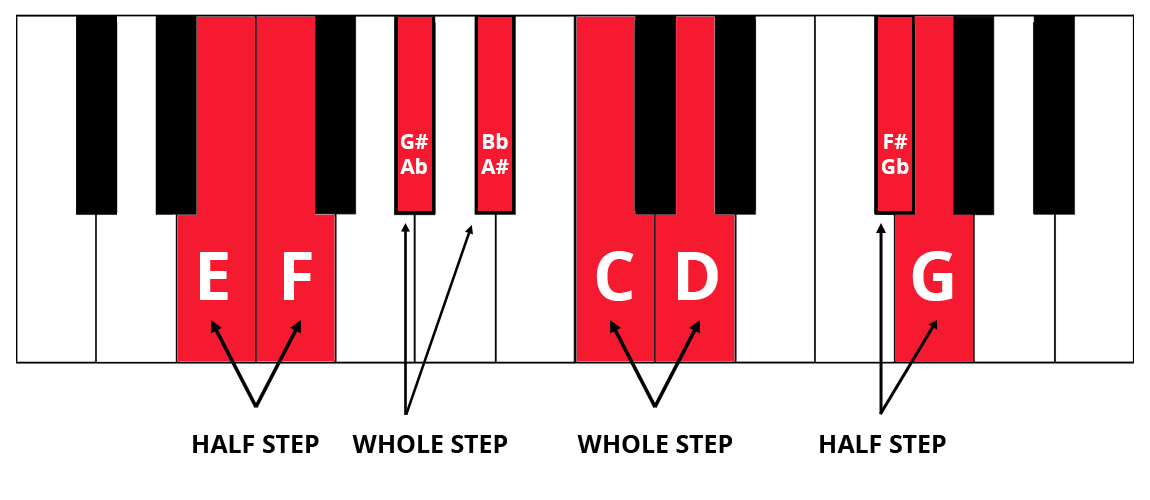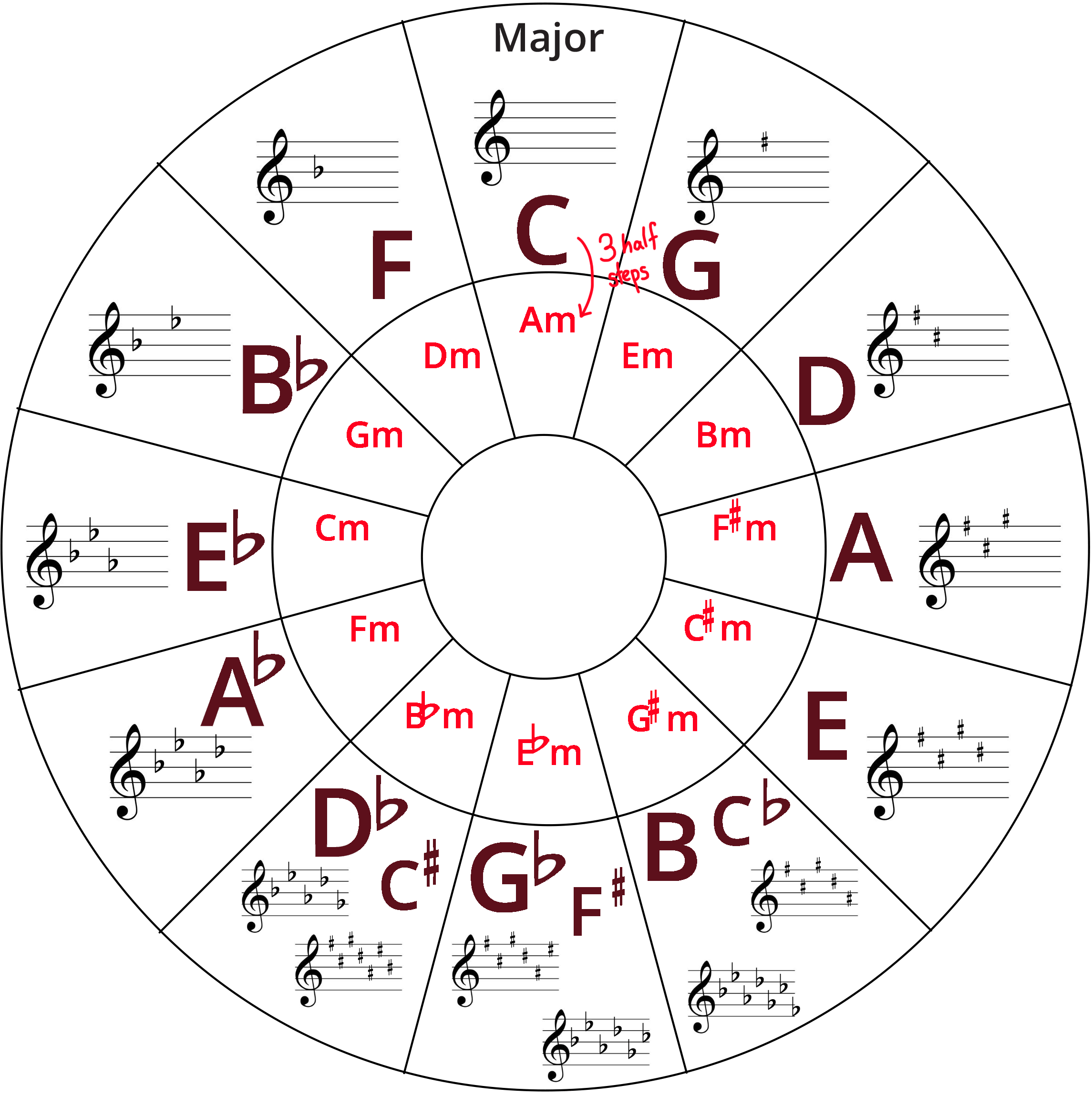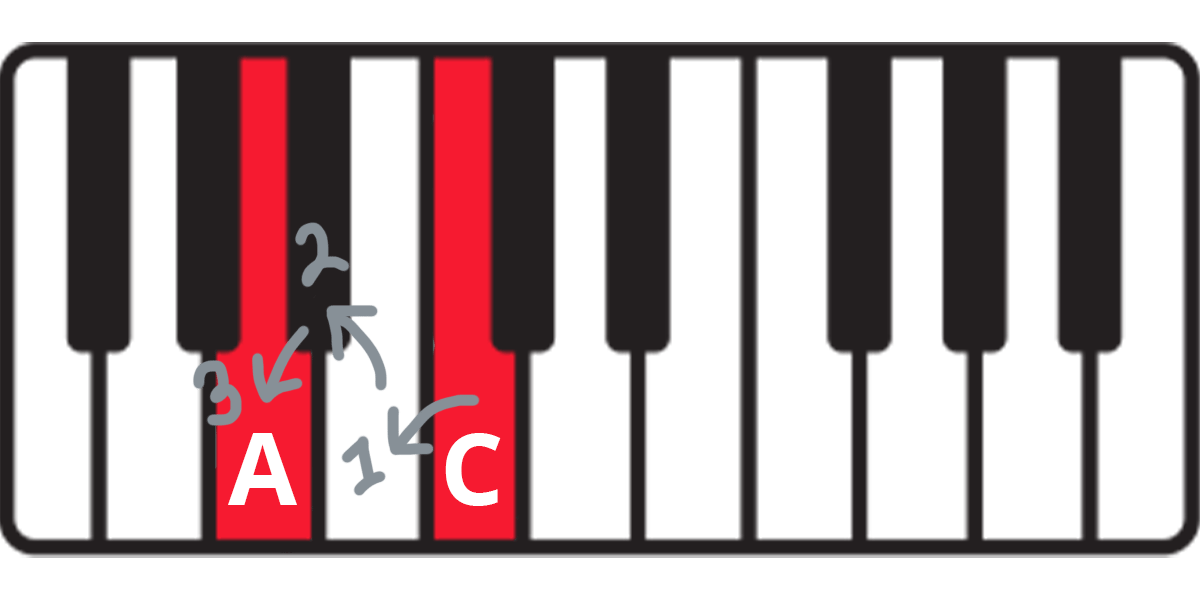Have you ever wondered what songs in major keys sound like in minor keys?
In this video, Sam and I find out!
We’ll take some of the happiest songs we know and re-imagine them in minor keys. Songs like:
This requires a little theory, so if you have questions about the minor key concepts we’re using, keep reading!
In Western music, major keys tend to sound “happy” while minor keys tend to sound “sad.” Scales (a sequence of notes) in either a major or minor key will follow a set pattern of whole and half steps.
Here’s the pattern of whole and half steps for a minor scale:
W – H – W – W – H – W – W
Using this formula, you can build a minor scale on any note.
This formula lets you build a natural minor scale, but there are other types of minor scales. To learn about harmonic minor and melodic minor scales, take a peek at Cassi’s lesson here.
 🎹 Whole Steps vs. Half Steps: Half steps are keys that are right next to each other on the piano. A whole step consists of two half-steps.
🎹 Whole Steps vs. Half Steps: Half steps are keys that are right next to each other on the piano. A whole step consists of two half-steps.
All major keys have a relative minor key. And all minor keys have a relative major key. They’re “related” to each other because they both have the same number of sharps and flats!
If you’ve ever seen the Circle of Fifths, this is what it’s all about.

But if you don’t want to carry a Circle of Fifths shaped frisbee everywhere you go, just keep these formulas in mind:

A parallel minor key is a key that starts on the same note as the major key it’s “parallel” to.
So, for example, the parallel minor key of C Major is C Minor. And the parallel minor key of G Major is G Minor.
It’s easier to sing something in a parallel key because you’re closer to the song’s original key. But you have to watch out for key signatures. Parallel keys don’t have the same numbers of sharps and flats!
For example, C Major has no sharps or flats, but C Minor has three flats because its relative major key is E Flat Major.
G Major has one sharp, but G Minor has two flats because its relative major key is B Flat Major.
If you want to learn more about minor keys, take a look at our other free lessons:
Otherwise, happy exploring and practicing!
Lisa Witt has been teaching piano for more than 20 years and in that time has helped hundreds of students learn to play the songs they love. Lisa received classical piano training through the Royal Conservatory of Music, but she has since embraced popular music and playing by ear in order to accompany herself and others. Learn more about Lisa.
/marketing/pianote/promos/april/banner-bg-m.webp)
We use cookies for traffic data and advertising. Cookie Policy »
/marketing/pianote/promos/april/banner-title.webp)